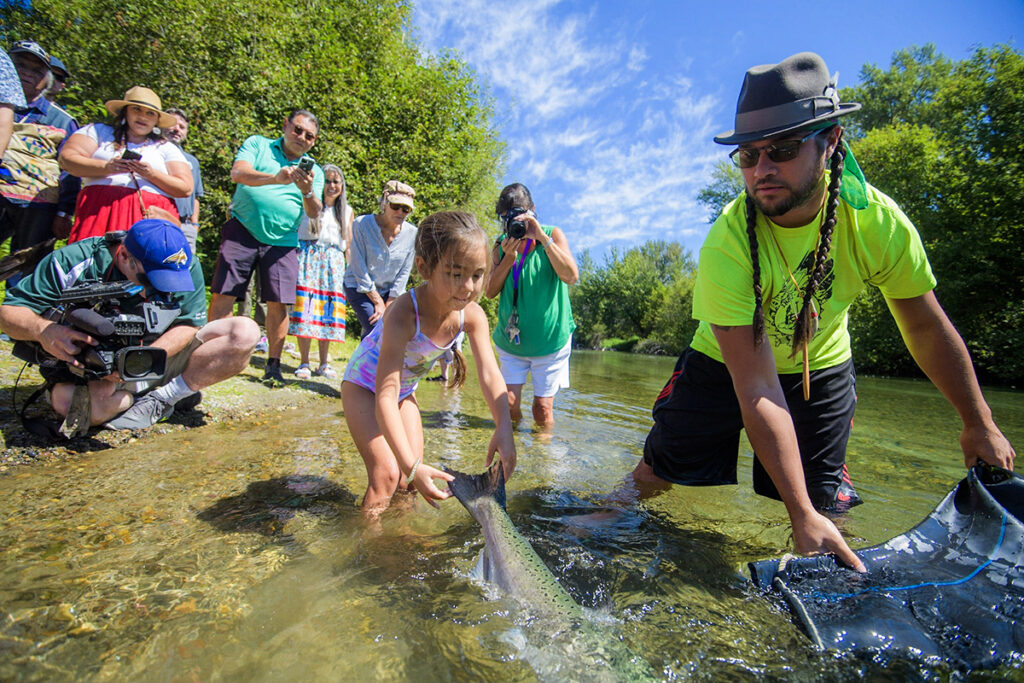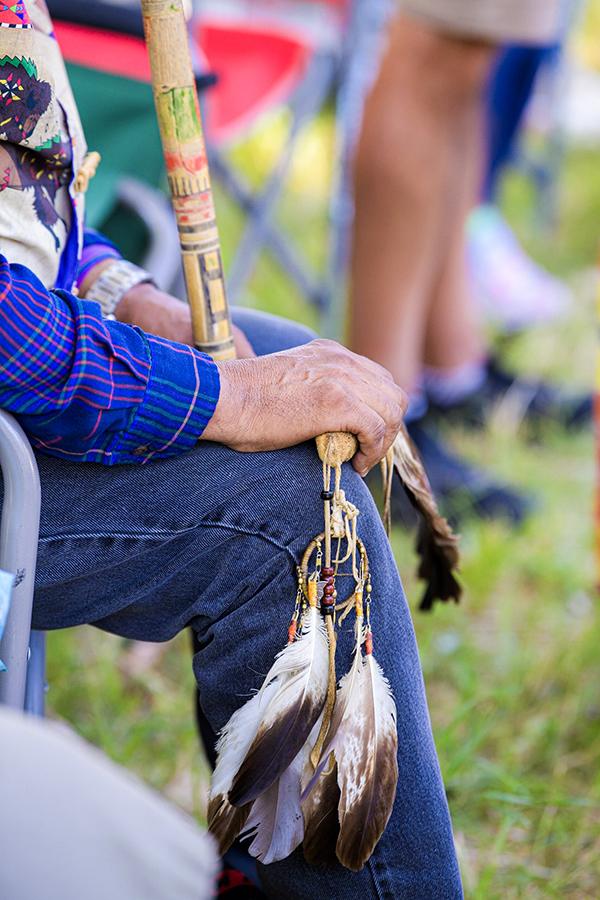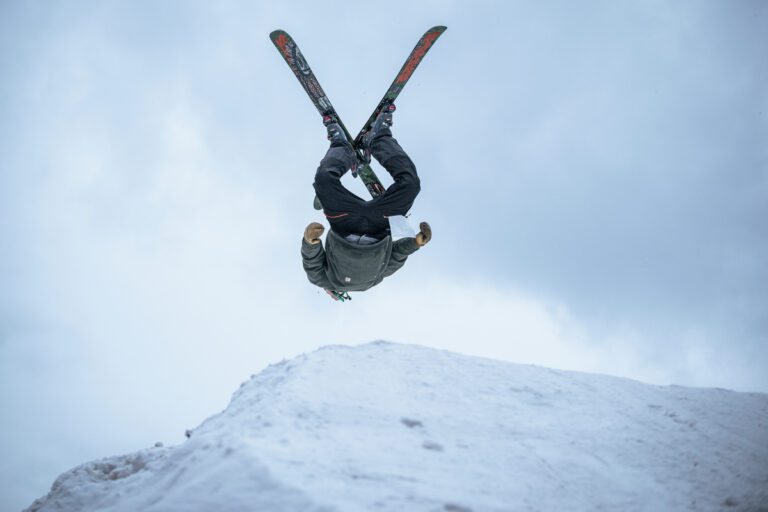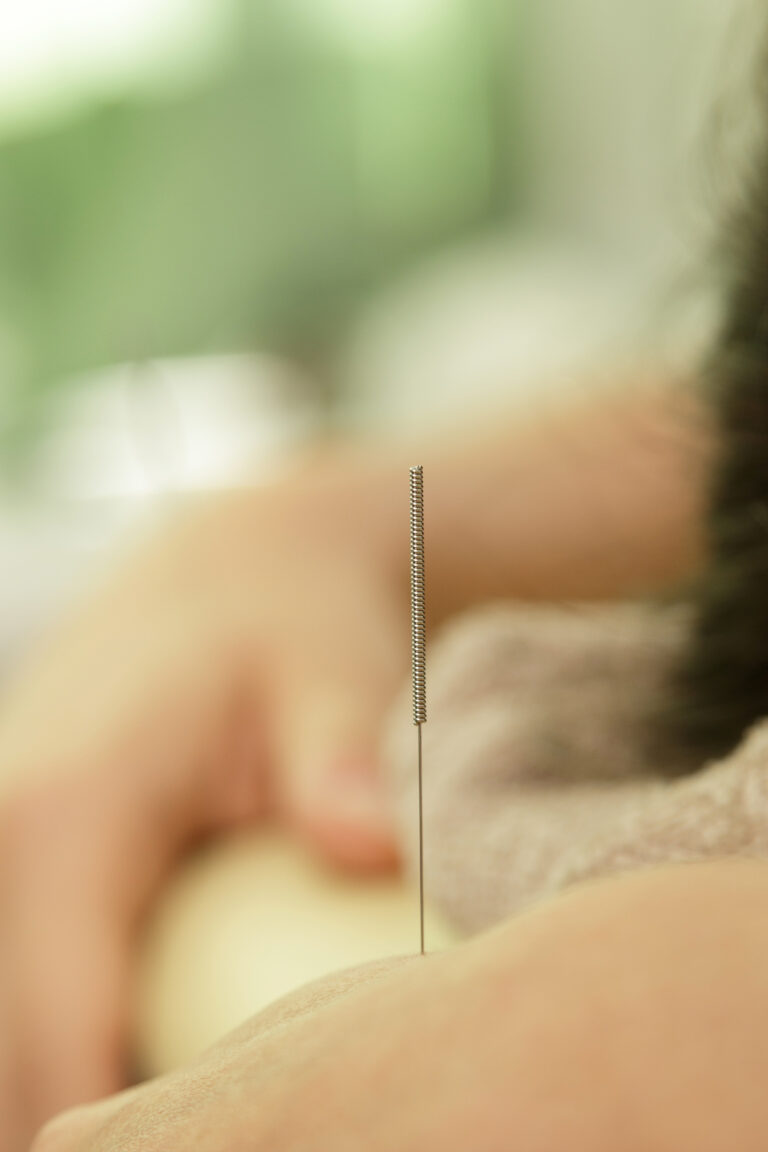Cover photo by Lorenzo Menendez Courtesy of INLC
By Adam Gebauer
When I was asked to write about the progress the five tribal nations of the Upper Columbia have made over the last 20 years in supporting fish, wildlife, and forests in this region, I knew it was going to be a daunting task. For well over a decade now, I have been working alongside the natural resource departments of these tribes on small subsets of these issues and have seen firsthand the vast breadth and depth of projects that each tribe has tackled. Their projects range from work to rehabilitate land directly on their reservation, working within their traditional territories (including Canada), to working collaboratively to restore salmon across their historic range.
Over the last 20 years, these tribes have bolstered their natural resource programs and created plans to support habitat protection on their reservations. The Spokane Tribe, for example, has a land management plan that supports wildlife habitat, including designating areas for restoration, areas of no timber harvest, and places to limit development. They have also set water quality standards accepted by the EPA to maintain fishable, drinkable, and swimmable levels in all water leaving and entering the reservation.
A goal of the 12 tribes of the Colville Reservation is to reintroduce the full subset of wildlife species that existed before western colonization. This is not only to allow these species to fulfill their ecological niche but also to provide tribal members opportunities for subsistence hunting. Along with the Yakama Nation, the Colville has introduced pronghorn to shrub steppe habitat. These populations have moved off the respective reservations and are breeding and occupying habitat throughout Central Washington. The Colville also reintroduced big horn sheep, are working to establish a breeding population of lynx along the Kettle Crest, and have recently released wood bison onto the reservation.

The Couer d’Alene Tribe has taken a lead role in the management of Lake Coeur d’Alene. Along with water quality issues, they have showed proof of concept that invasive northern pike suppression leads to increased trout populations. They have acquired land for habitat protection and restoration, including purchasing and/or trade of around 15 miles of the headwaters of Hangman Creek. Recently, the tribe purchased land in Spokane along Hangman where they plan to have a rearing area for chinook salmon.
The Kootenai Tribe on the Idaho Panhandle are working to restore 55 miles of riparian habitat along the Kootenai River system. They have been working to increase populations of endangered Kootenai white sturgeon and burbot, a popular sport fish. In 2017, they built a hatchery that supports both fish—the first burbot hatchery in the nation—and in January 2019 burbot fishing opportunities were open to the public.
The Kalispel Tribe has acquired and is working to restore an additional 5,000 acres of wildlife habitat and has restored the hydrologic floodplain processes to 3,000 acres within their traditional lands of the Pend Oreille waterways. They are working with the managing agencies for three dams along the Pend Oreille River — Boundary, Box, and Albeni Falls — to install fish passage. Two of these projects are in place and the Albeni project will be under bid in 2025. They are also working with different agencies including Seattle City Light, Pend Oreille County Public Utilities, the Colville National Forest, Trout Unlimited, and even The Lands Council (my employer) to restore habitat for the threatened bull trout and endemic cutthroat trout across the watershed. To bolster habitat for these fish, they installed a cold-water syphon at Sullivan Lake, which has lowered the temperature of Sullivan Creek by an average 6 degrees Celsius. They are also trying to replicate this to lower the temperature of Priest River.

The Kootenai Tribe of Idaho and the Kalispel Tribe have a small land mass, so as much as they work on their reservation lands, they also conduct much of their habitat work on public lands within their ancestral territory. Both tribes have been working with Canadian agencies, including the Arrow Lakes Society, to restore the Selkirk Mountain Caribou herd to its historic range into the Southern Selkirks. They are also active on the interagency grizzly bear recovery task force, trying to restore genetically viable populations of this key species to the Selkirk and Yaak recovery zones.
Both the Colville and the Kalispel have leveraged the Tribal Forest Protection Act (TFPA) to conduct projects on the Colville National Forest. The Colville Tribe engaged in the Sanpoil project in Ferry County to reduce wildfire potential along the reservation boundary. The Kalispel was integral in the Trail Project, which spans six watersheds in Pend Oreille County and focuses on forest health, wildfire fuels reduction close to population centers, and improved recreation. Along with conducting prescribed burns on their forest land, the five nations are also reestablishing the practice of cultural burning, which, along with supporting forest health, can have specific objectives such as increasing huckleberry habitat or camas fields.
One of the most culturally significant and biggest lifts is the reintroduction of salmon to their historic waterways in the upper Columbia River above Chief Joesph and Grand Coulee Dams. The nations, particularly the Coeur d’Alene, Spokane, and Colville, are in the second of three phases of a decades-long fight to bring salmon back. The current phase is studying the habitat suitability of the spring Chinook in their natal waters as well as the reservoir of Lake Roosevelt. Tribes are looking at the ability of these fish to spawn successfully in main stem and tributary waters. The tribes have released adult fish into streams such as the Sanpoil, Little Spokane, Hangman, and the Spokane and have found that these fish have been able to create redds (fish nests) in the sand and gravel. Another part of the study is looking at movement and survival of juvenile fish within Lake Roosevelt and through the dams, to the ocean and hopefully back again. These young fish need cold, swift, oxygen-rich water to make it to the ocean, and the reservoirs behind the dams make this challenging. One of the key aspects of this project is determining ways to bring salmon back while maintaining the current hydroelectric operation of the Columbia and Spokane Rivers.
This is only a small subset of all the work that these tribes have been able to accomplish in our region over the las 20 years. They are the forefront of actions to make our landscapes more climate resilient, habitats healthier, and waters cleaner. As is often quoted in tribal culture, they are looking seven generations in the past and seven generations into the future.
Adam Gebauer has been slipping and sliding in some local creeks while helping the Spokane Tribe collect data on trout and future salmon habitat. He is passing miles on the trails while enjoying the fall colors.













